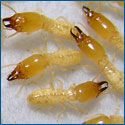
Every year, termites inflict over $5 billion worth of damage
The escalation of termite-related damages is a cause for concern. Consider the following figures: a termite colony comprises anywhere from 350,000 to well over a million workers, soldiers, and winged swarmers. A single termite queen can lay thousands of eggs each day and have a lifespan of 30 to 50 years. This implies that even after significant devastation, a queen can recover her losses, repopulate her colony, and establish numerous new colonies.
For a subterranean termite colony to thrive, three essential elements are required:
Soil: Subterranean termites construct their colonies underground, utilizing the soil as their building material. They create intricate tunnel systems, known as galleries, extending up to three feet below the surface. Termites often construct mud tubes, using soil, to connect their underground colonies with above-ground food sources, such as the wood in your home.
Wood: Termites feed on any material containing cellulose, and wood, being rich in cellulose, is their preferred food source. If a piece of wood touches the ground, it is almost certain that a termite colony somewhere will discover it. While some subterranean termites may consume other materials like vegetation, dung, and humus, their primary and favored food source is wood.
Water: Similar to most living organisms, termites rely on a source of water for survival. Whether it's from a leaky faucet or natural rainfall, termites always seek a moisture source to sustain themselves. Water is vital for their existence.
Understanding these aspects helps to highlight the persistence and resourcefulness of termites in their search for food, shelter, and moisture. Taking proactive measures against termite infestations becomes crucial in protecting your property.



